They’ve Survived Mass Extinctions, Continental Drift, and Cosmic Changes.
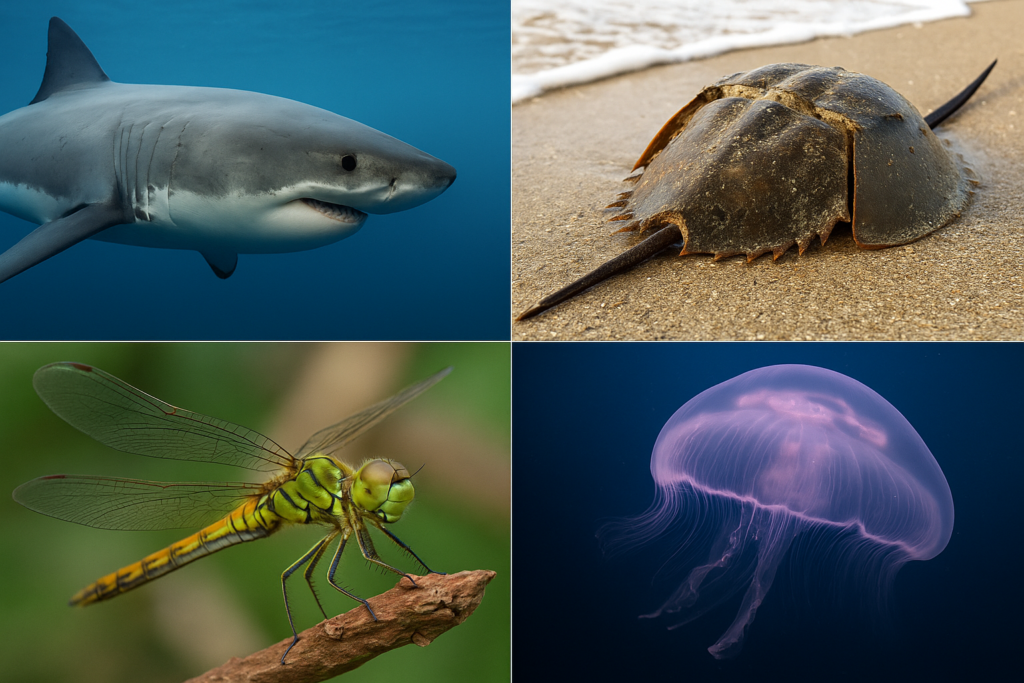
They’re older than dinosaurs, older than flowers, older, somehow, than the very continents we stand on. These living relics have quietly thrived through asteroid impacts, shifting tectonic plates, and climate chaos that have wiped out nearly everything else. Some look alien. Others hide in plain sight. But all of them have one thing in common: they’ve been here far longer than we have, and they’re not done yet.
1. Sharks (400 + Million Years Old)
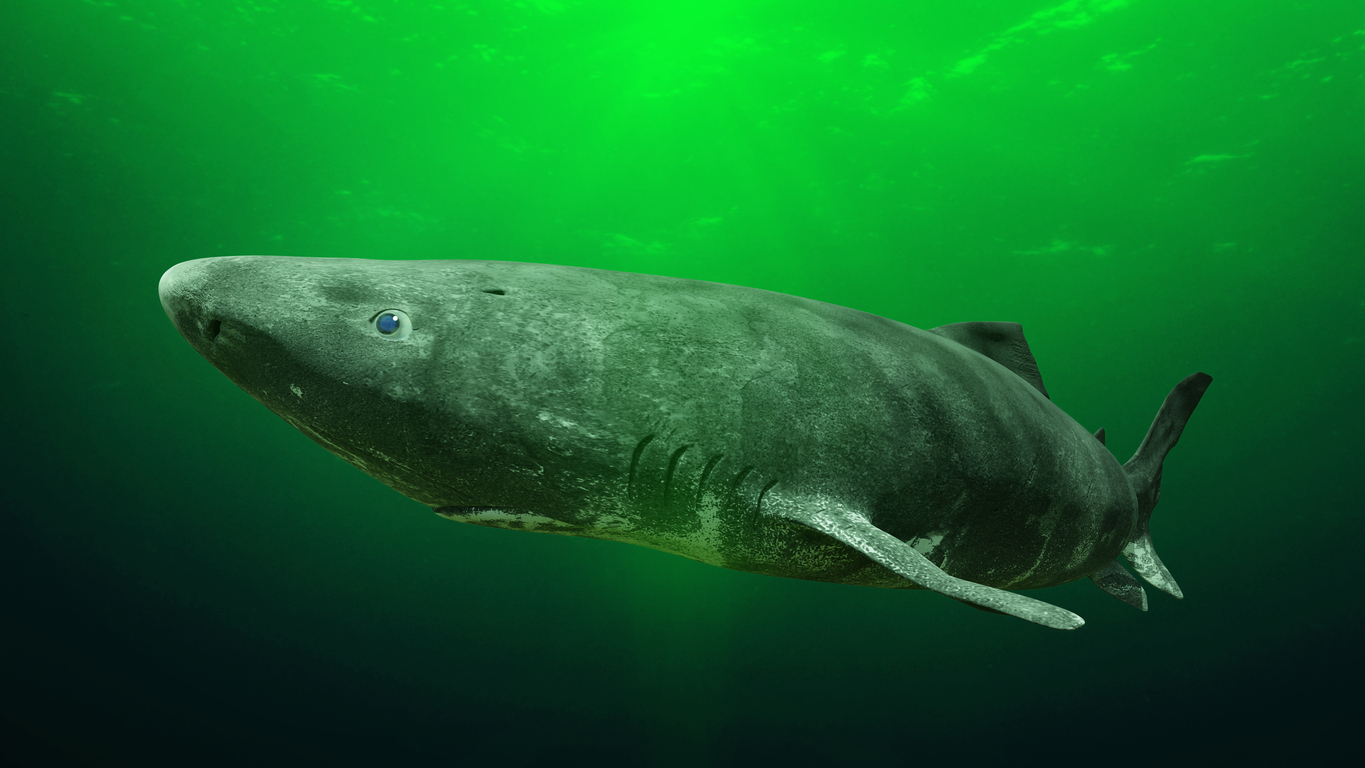
Sharks, the ancient rulers of Earth’s oceans, have been swimming for over 450 million years, a timeline that predates the existence of trees and even Saturn’s iconic rings. Fossils tell us that their fundamental structure has remained largely unchanged through five mass extinctions. With a body made of cartilage, they are swift and possess remarkable healing abilities. The shark family, which includes more than 500 species, has adapted to every marine environment, from the tiny lantern sharks to the colossal whale sharks. Their ancient resilience allowed them to dominate the seas long before the first dinosaurs roamed the Earth.
Sharks possess a range of unique adaptations that make them truly fascinating creatures. They can sense prey using electro-receptors that can detect even the faintest heartbeats in the water. Their skin is covered in tooth-like scales that reduce drag, giving them stealth and speed. Some, like the Greenland shark, can live for centuries in the icy darkness with slow precision. Others, like the filter-feeding sharks, thrive in tropical shallows. Sharks have not needed to evolve much because their design is already perfect, streamlined, silent, and built for survival over half a billion years.
2. Dragonflies (300 Million Years Old)

Long before dinosaurs roamed or birds took to the skies, dragonflies were already masters of the air. These ancient insects first appeared over 300 million years ago, with some prehistoric relatives boasting wingspans of more than two feet. Their delicate, stained-glass wings may look fragile, but dragonflies are elite aerial predators capable of midair acrobatics that would humble a fighter jet.
Modern dragonflies still carry the blueprint of their ancient ancestors, from multi-faceted eyes that see in almost every direction to the ability to hover, glide, and reverse on a dime. They snatch prey with a near-perfect kill rate, thanks to their speed, vision, and four independently moving wings. Unlike most insects, dragonflies spend much of their lives underwater as nymphs before emerging to rule the skies. The fact that their design has remained virtually unchanged for hundreds of millions of years is proof that sometimes nature gets it right the first time.
3. Horseshoe Crabs (450 Million Years Old)
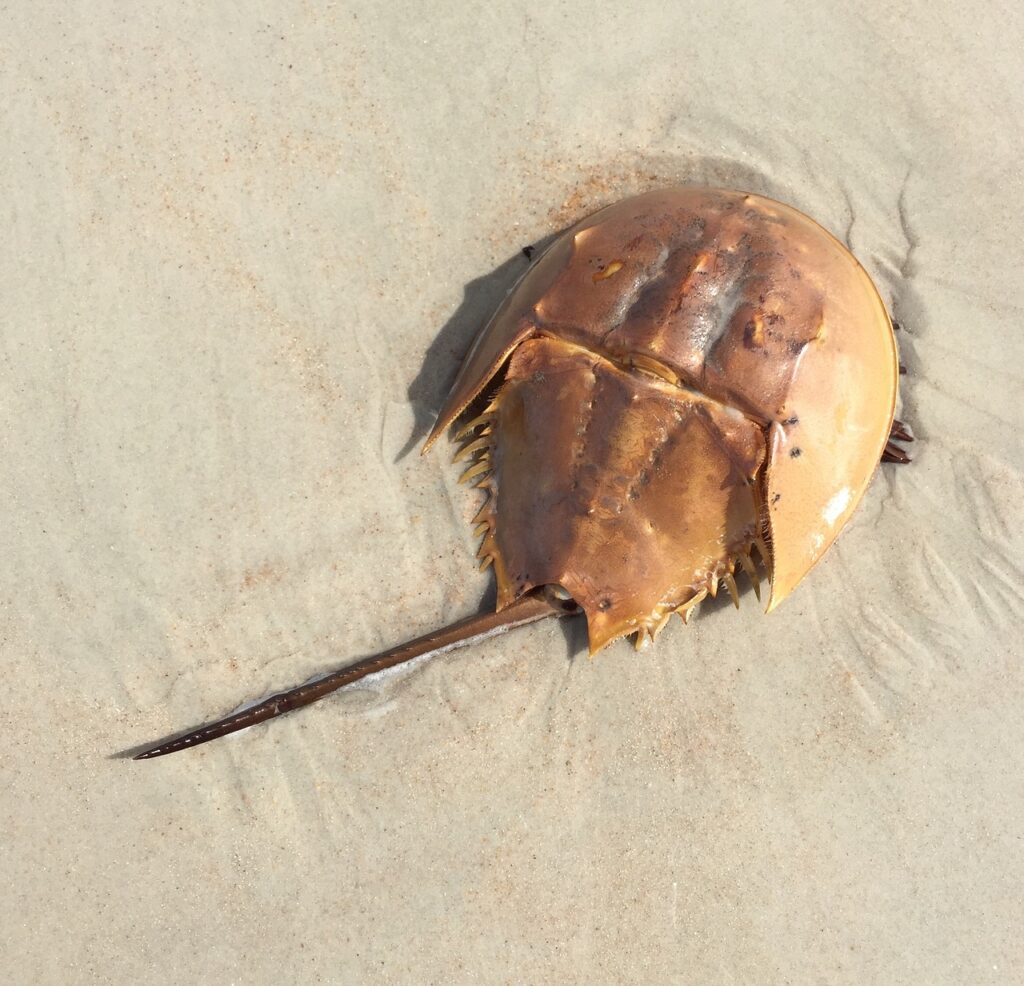
Horseshoe crabs look like armored hockey pucks scuttling across the seafloor, yet their story began roughly 450 million years ago. Fossil records show those spiky tails and helmet-shaped shells staying almost identical. At the same time, whole dynasties of plants and animals rose and vanished. They survived oxygen crashes, asteroid strikes, and Ice Age deep freezes the way a cast-iron pot survives campfire sparks. If Endurance had a mascot, it would wear a bronze shell and shuffle on ten-jointed legs.
Inside that shell pumps vivid blue blood rich in copper and a remarkable immune agent called Limulus amebocyte lysate. Modern medicine relies on it to test every vaccine and implant for deadly microbes, a job no synthetic can match. Each spring tide, millions crawl onto beaches under a full moon, turning sand into a living copper tide that feeds shorebirds and fuels coastal folklore. Flip one upright on a summer shoreline, and you are touching a design that proved itself before fish even developed jaws.
4. Jellyfish (500 Million Years Old)
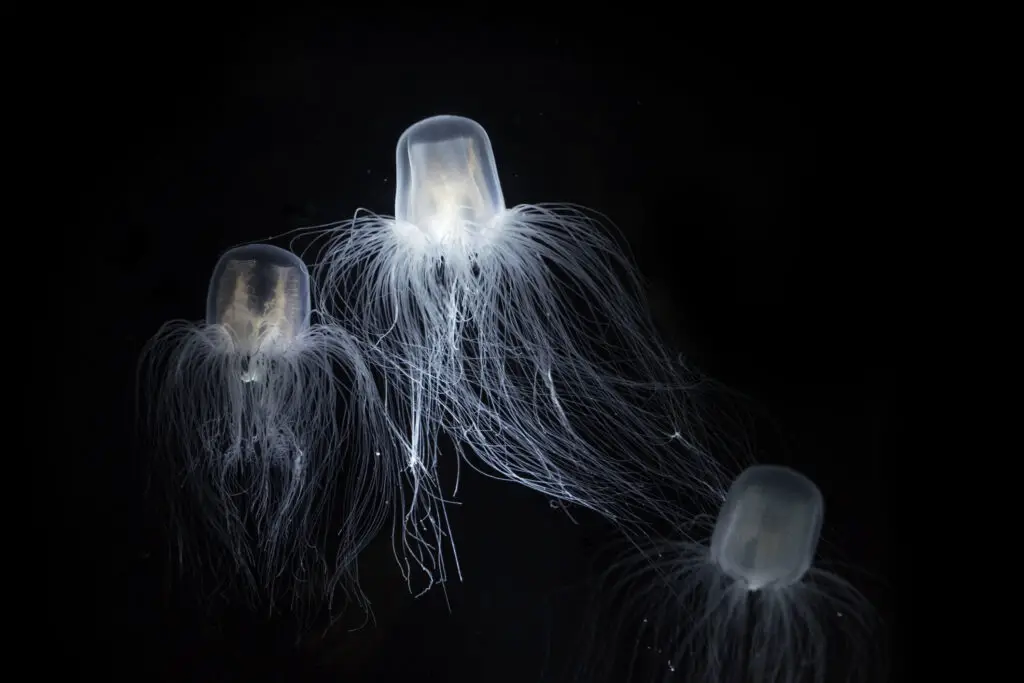
Jellyfish have been pulsing through Earth’s oceans for at least 500 million years, making them older than dinosaurs, trees, and even the earliest vertebrates. They’ve endured five mass extinctions without a brain, heart, or bones, just soft, gelatinous bodies powered by simple nerve nets. They move by contracting their bells in gentle pulses, drifting wherever the currents take them like weightless, living parachutes. Despite their delicate appearance, jellyfish are incredibly resilient. Some species thrive in low-oxygen zones where most marine life can’t survive, and they’ve been known to bloom in alarming numbers, disrupting fisheries and even shutting down power plants.
Among the most fascinating is Turritopsis dohrnii, the so-called “immortal jellyfish” that can revert to its juvenile stage and theoretically repeat its life cycle indefinitely. Others glow with bioluminescence or deliver venomous stings powerful enough to hospitalize swimmers. Their simplicity is their secret weapon. In a world where complexity often collapses under pressure, jellyfish just keep floating forward, ancient, alien, and oddly unstoppable.
5. Crocodiles (200 Million Years Old)
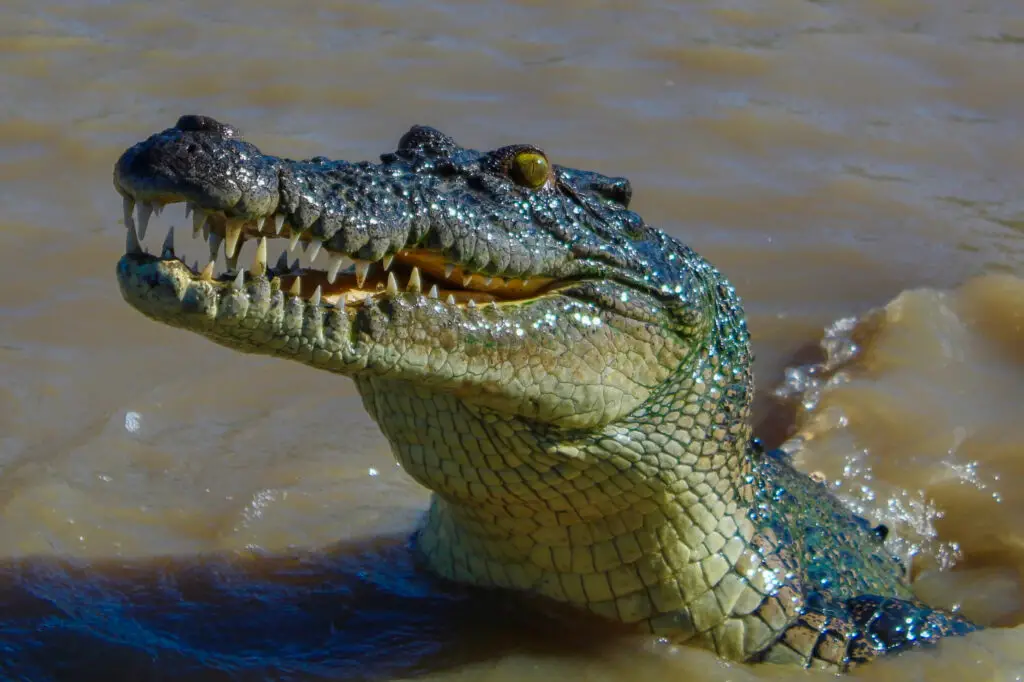
Crocodiles, the living fossils, are a testament to resilience. Their ancestors first emerged over 200 million years ago, silently navigating prehistoric swamps while early dinosaurs were still finding their footing. Unlike their more flamboyant reptilian relatives, crocs embraced a slow-and-steady lifestyle that allowed them to survive ice ages, volcanic winters, and even the asteroid that wiped out the dinosaurs. With their amphibious stealth and cold-blooded patience, they waited on riverbanks while the world transformed. Their ability to slow their heart rate to just two beats a minute enables them to hold their breath for over an hour, leaving prey with little chance once the water’s surface ripples.
Today’s crocodiles still bear the hallmarks of their ancient lineage: armored skin, night-vision eyes, and a jaw force that ranks among the strongest in the animal kingdom. Pressure-sensitive pits in their snouts can detect even the faintest vibration, turning murky water into a touch screen. Female crocs construct compost-like nests to incubate their eggs and gently transport their hatchlings to the water in their mouths. Crocodiles, with their blend of brutality and protectiveness, remain essentially unchanged, a testament to their unique and fascinating features.
6. Coelacanths (360 Million Years Old)
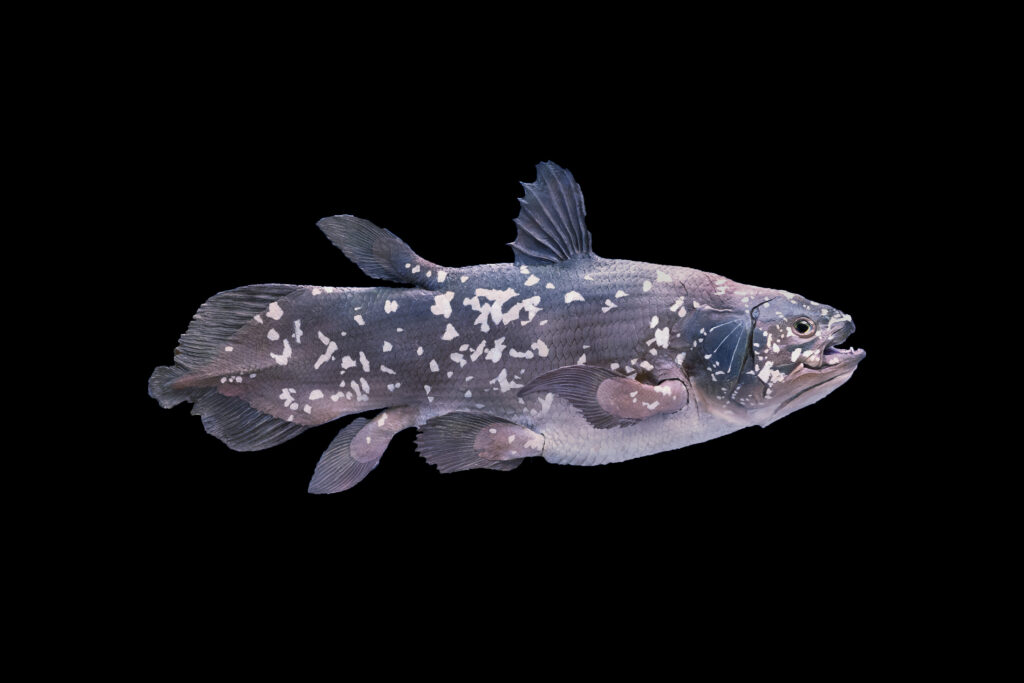
Coelacanths were supposed to be extinct. Paleontologists thought these lobe-finned fish vanished with the dinosaurs until one turned up in a South African fish market in 1938. It was a stunning moment, like finding a living dinosaur wrapped in butcher paper. These deep-sea dwellers trace their lineage back 360 million years, a time when vertebrates were just beginning to crawl onto land. They’ve changed so little that scientists call them “living fossils,” with fins that resemble primitive limbs and a slow, swaying swim, unlike any modern fish.
Found today in deep underwater caves off the coasts of Africa and Indonesia, coelacanths live far from sunlight and human noise. They move slowly, live long lives, and give birth to live young after a gestation that can last more than three years. Their ancient DNA holds clues about the evolution of land animals, including us. Quiet, elusive, and incredibly rare, the coelacanth is a time capsule with gills.
7. Tardigrades (500 Million Years Old)
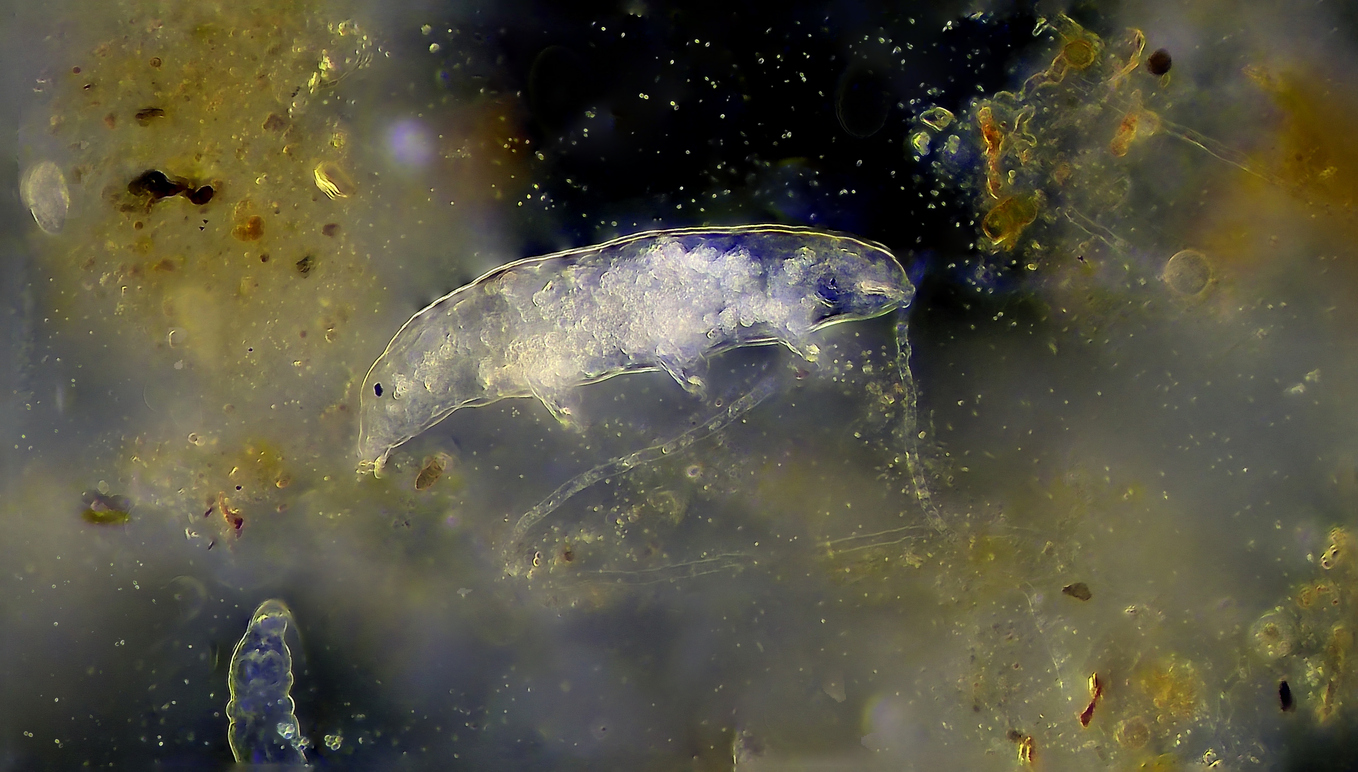
Picture a speck-sized creature that predates the continents. Tardigrades, the tiny water bears, arrived over 500 million years ago. Cambrian rocks, which are geological formations from the Cambrian period, still hold their shapes beside trilobites and early sponges. They trudged through ice ages, volcanic winters, and asteroid nights unbothered. Their body plan is a tough, balloon-like structure with eight legs, simple yet unbreakable. Time keeps remodeling Earth; the water bear simply keeps walking.
When the world turns deadly, a tardigrade curls into a dehydrated capsule called a tun. In that paused state, it survives boiling pools, polar cold, and crushing trenches. Scientists launched them into open space; they thawed and continued to crawl. Their cells swap water for a sugar glass that locks proteins in place. DNA repair enzymes patch whatever cosmic rays try to shred. One drop of moisture revives the bear, and it waddles off to graze algae, a testament to their incredible resilience.
8. Sponges (600 Million Years Old)
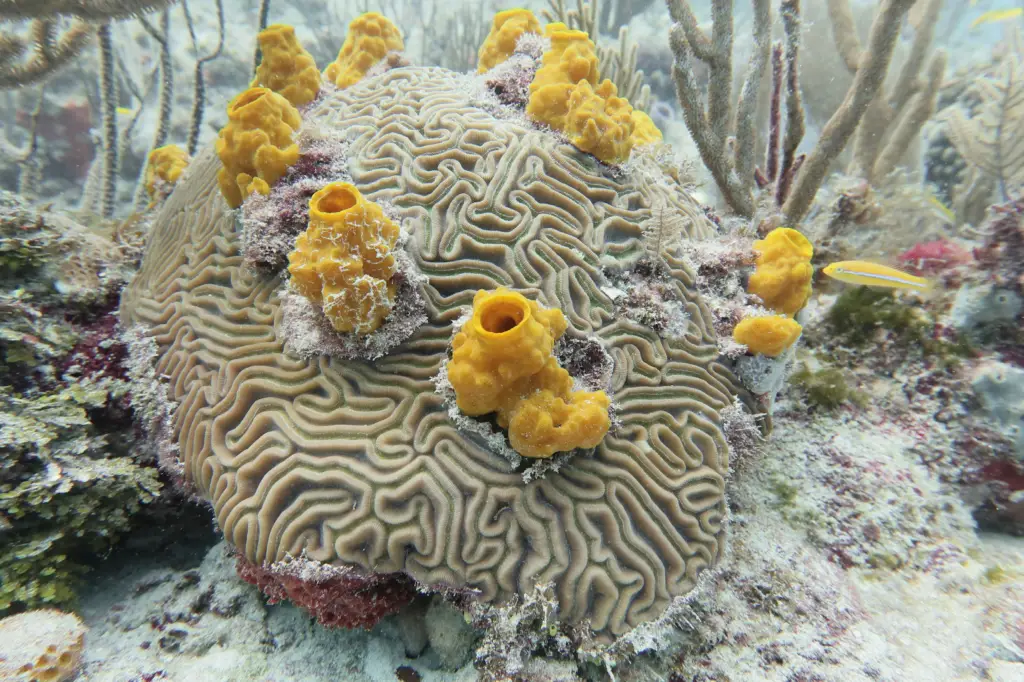
Sponges are some of the earliest animals to ever exist, showing up more than 600 million years ago, long before backbones, brains, or even basic symmetry. They don’t move, hunt, or think. They simply sit and filter water, pulling in nutrients and expelling waste. It sounds simple, but that simplicity is precisely why they’ve lasted so long. Their porous bodies are like natural plumbing systems, quietly cycling gallons of seawater every day. Early sponge fossils are found in rocks older than most complex life, proving they were already thriving when life was just getting started.
Even now, sponges live in every ocean, from coral reefs to the dark, cold seafloor. Some glow with bright colors, while others resemble crusty rocks or alien mushrooms. They host bacteria, process toxins, and even help build reefs. Scientists study the chemical defenses of organisms for new medicines, including potential cancer treatments. For something that doesn’t look alive at first glance, sponges have shaped the ocean for longer than almost any other creature.
9. Nautiluses (500 Million Years Old)
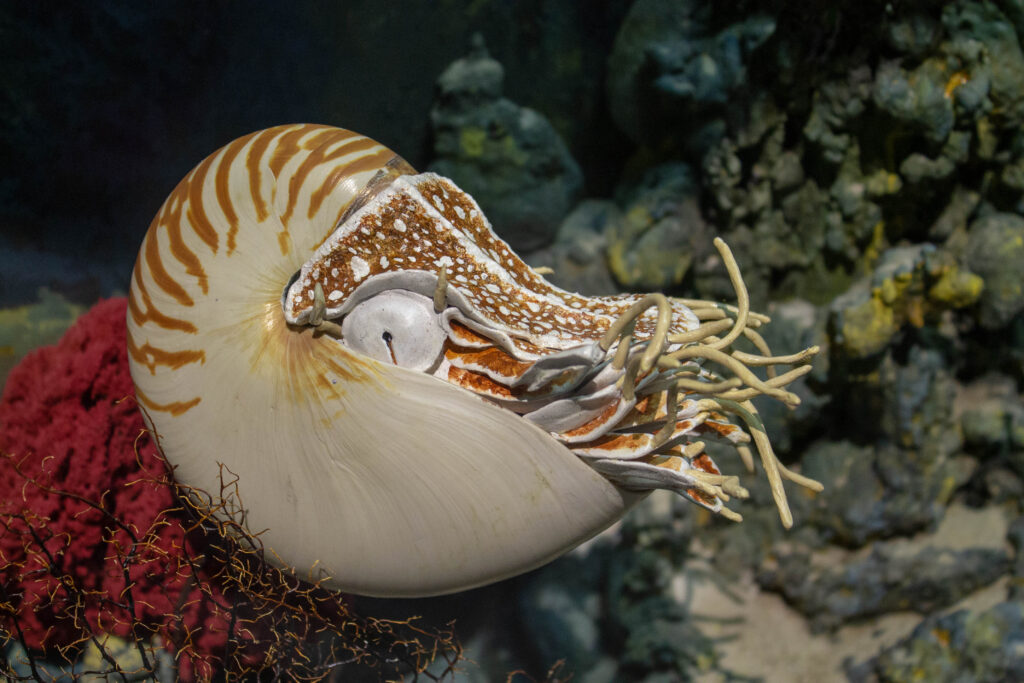
With their perfect spiral shells and slow, curious movements, nautiluses look like something out of a science fiction story. But they’ve been quietly cruising the oceans for around 500 million years. Long before fish had jaws or plants had leaves, nautiluses were already coasting along ancient seafloors. Their chambered shells enable them to control buoyancy by adjusting gas and fluid levels, a built-in submarine-like feature engineered by evolution. As the world above changed, they simply retreated to deeper waters and kept going.
Today, nautiluses are found in the deep reefs of the Indo-Pacific, where they rise at night to feed and sink back down by day. They have dozens of small tentacles, but no suckers, and their primitive eyes can detect light but not focus clearly. Unlike most cephalopods, they grow slowly and live long lives. They’ve outlasted relatives like the ammonites, and now their most significant threat isn’t nature. It’s overfishing for their beautiful shells.
10. Lampreys (360 Million Years Old)
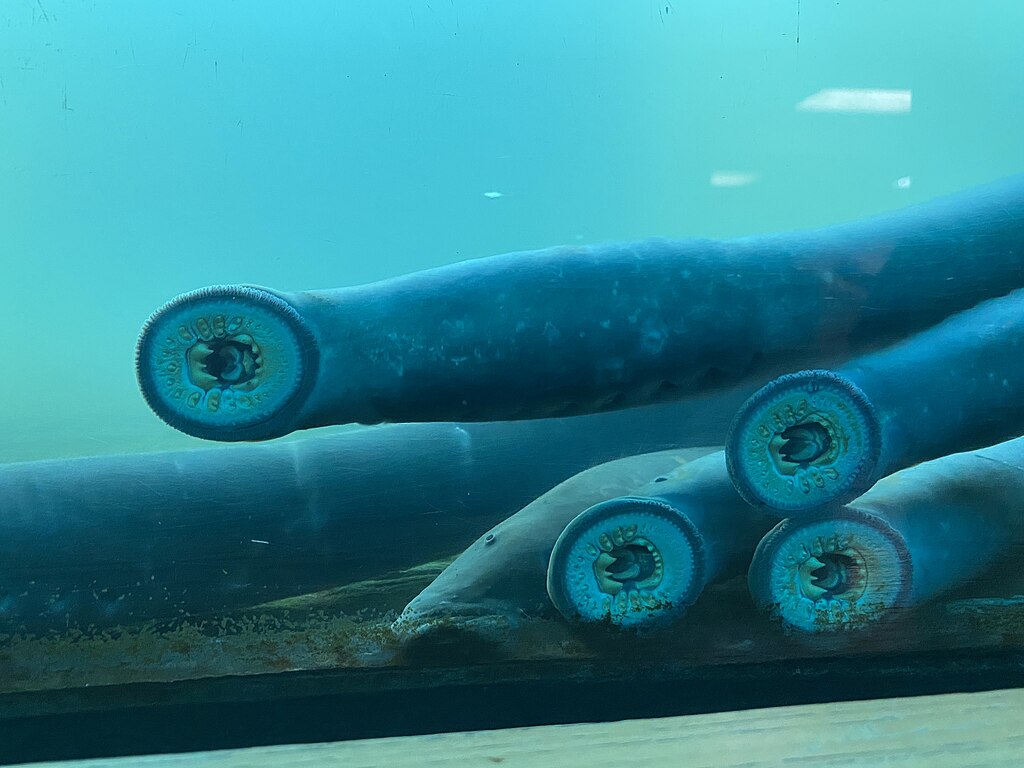
Lampreys are unsettling to look at, and maybe that’s the point. These jawless fish have been around for about 360 million years, clinging to the same basic design they had when armored fish ruled the seas. They don’t have jaws, scales, or paired fins. Instead, they have a round, sucker-like mouth filled with rows of sharp, keratin teeth used to latch onto other fish and feed on their blood. It’s not pretty, but it works, and it always has. Their unique design, with a flexible body and a powerful suction mouth, has allowed them to survive and thrive in a variety of environments.
They can be found today in both freshwater and saltwater, often migrating upstream to spawn, like salmon. Some species are parasitic, others are not, but all share that eerie, ancient look, a sight that is sure to fascinate. Scientists consider lamprey’s living examples of what early vertebrates may have looked like before evolution experimented with jaws and bones. Their endurance comes not from dominance but from persistence. In a world that rewards adaptation, lampreys have survived by staying weird.
11. Tuataras (200+ Million Years Old)
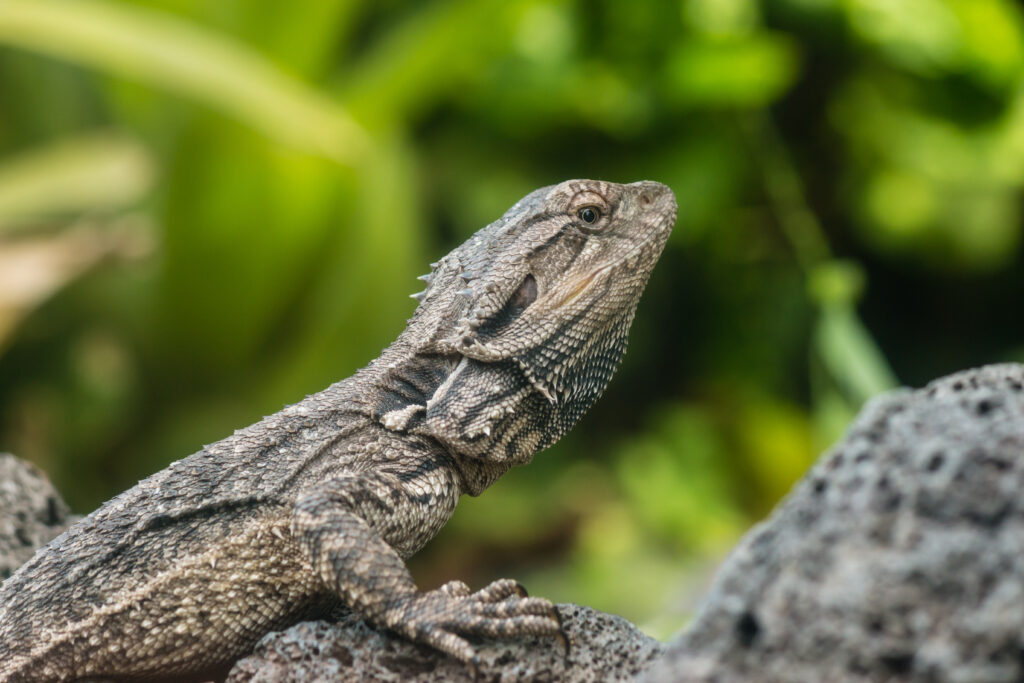
Tuataras may look like ordinary lizards, but they’re anything but. These reptiles have walked the Earth for over 200 million years. They are the last living members of a prehistoric order called Rhynchocephalia. While dinosaurs roared and vanished, tuataras quietly held their ground. Their skulls and teeth haven’t changed much since the Jurassic period, and they even have a third “parietal eye” on top of their heads that senses light, though it fades with age. It’s not for vision. It’s more like a built-in calendar to help regulate sleep and seasonal cycles.
Today, tuataras live only in New Zealand, mostly on protected offshore islands where they’re safe from predators like rats. They grow slowly, live for over 100 years, and breed just once every few years. Their eggs can take more than a year to hatch. Everything about them moves at a different pace. In a fast-changing world, tuataras are the long game.
12. Scorpions (430 Million Years Old)
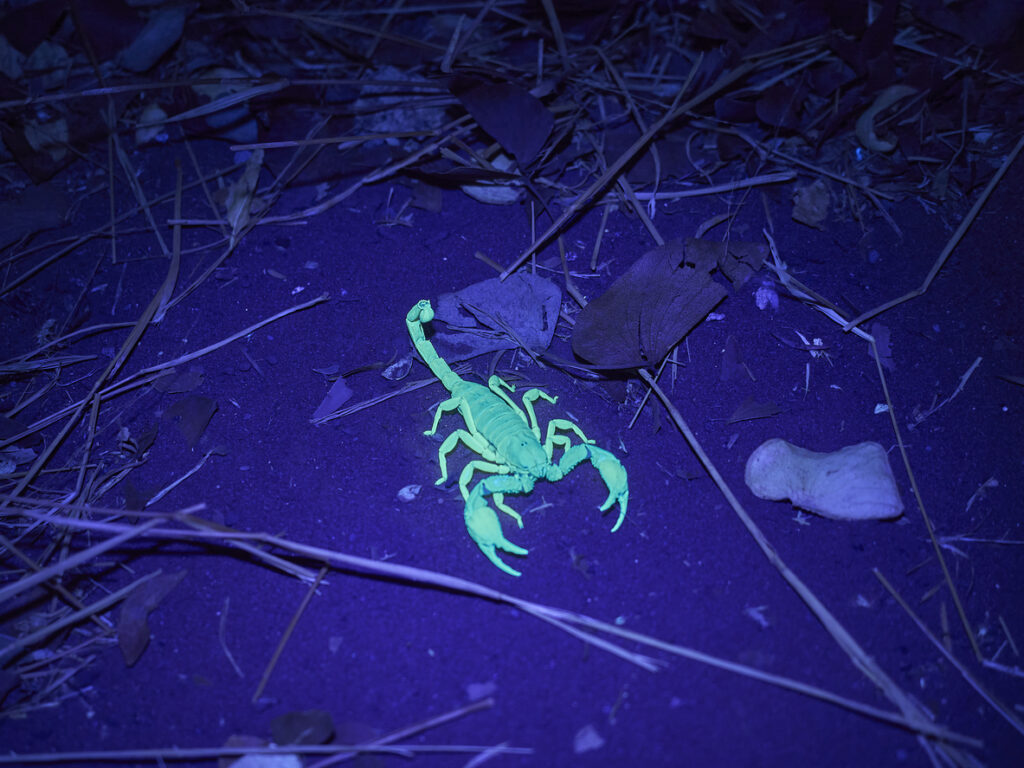
Scorpions have been prowling Earth’s surface for more than 430 million years, long before forests grew or insects took flight. Fossils show some of the earliest species were giants, over two feet long, living in shallow coastal swamps. Their bodies were already equipped with segmented armor, gripping pincers, and a curved stinger, features that still define them today. Unlike many ancient creatures, scorpions didn’t need a redesign. They simply moved with the land as oceans receded and continents drifted. Today they live on every continent except Antarctica, thriving in deserts, jungles, grasslands, and even gardens.
Under ultraviolet light, they glow a pale, eerie green, thanks to a compound in their exoskeleton that scientists still don’t fully understand. Some scorpions can go months without food, slowing their metabolism to near stasis. Others give live birth and carry their young on their backs until they’re ready to fend for themselves. Their venom, once feared, is now being studied for medicine. For creatures so feared and misunderstood, they’ve always known how to survive.
This story, 12 Living Creatures Older Than Dinosaurs—Some Even Older Than Saturn’s Rings was first featured on dailyfetch.net.


